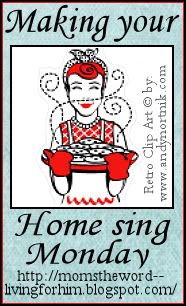
Today I wanted to talk about the value of keeping a pricebook. I'm a pretty thrifty shopper. I know how much I'm willing to pay for the things that I shop for. The price I am willing to pay is less than what you can walk into your regular grocery store and pay because I wait for sales, I buy sale items in multiples so that I can make it to the next sale and I use coupons. But the question then becomes...so when is something a good deal?
To answer that question, I propose that you start yourself a pricebook. I'm sure that there are many ways to go about making a pricebook, but I'll tell you how I did mine. I started by choosing the store with the best overall prices. I went to Aldi's. That's a discount store with mostly storebrand or brands you never heard of on most items. They have name brand items that are shipped in as special deals, clearance, etc but you can't count on finding national brand items every time you shop there. For most items there may only be one brand available. They don't even bag the groceries for you, you must bring your own bags or pick up boxes as you're shopping (I do both). And you have to "rent" your shopping cart for a quarter that will be refunded when you return it at the end of your trip. Aldi's is not the most convenient place to shop, but since you aren't paying for those little conveniences, you do find a lower price there. I'm describing Aldi's because while I know many places have them, many do not. I'd never heard of Aldi's until I moved to Kansas. We didn't have them in Oklahoma. (The semi-equivalent in Oklahoma is Sav A Lot)
So to make my pricebook, I went into my grocery store, spiral notebook and pen in hand and went down the aisles like I normally would. Picking the items that I normally shop for, I would write down the item, brand, size package and the price. It may need to be noted, you don't have to price EVERYTHING. Just the things that you shop for most. Don't make it so time invasive that it's not worth doing, just pick the things that you are getting once a week or several times a month...your most frequently purchased items, and the ones who take the larger portion of your budget. For example it's worth noting the price on the gallon of milk and eggs, but not really worth your time to write down how much a can of olives is unless your family eats them everyday like snacks. It is worth your time to note the prices normally for meats and things that you aren't picking up every week, but that take alot of your food budget, so that you can note patterns in sales and figure out what the best prices are. So I always look at the prices on whole chickens, chicken quarters, ground beef, turkey and the breakfast and lunch meats. By noting these prices I know what is "regular" and I can pick up enough at a sale to tide us over until the next sale, keeping us from buying at the "regular" prices!
So, at Aldi's, I just went down the aisle, and wrote down the following information for our most frequently purchased items:
- ITEM
- BRAND (At Aldi's I would put whatever brand they sell...this field becomes important at other stores)
- SIZE PKG
- PRICE
- UNIT PRICE (you can figure this later, by dividing item price by the size on the package...but you definately need the information as you compare prices)
The next step, I did on the following grocery trip. I compared my list as I shopped with my regular grocery store, Dillons. I only made entries, however, when I found prices that were cheaper. For instance, Aldi's does have cheap cereal. It's much cheaper than the national brands, however, you can buy the generic cornflakes, raisin bran and fruit loop (type) cereal at Dillons for under a dollar. The idea is to have record of the CHEAPEST REGULAR prices in town. I wouldn't record sale prices (those can be watched with sale flyers and is another budget topic by itself) I just want to note the everyday low price that I can find walking into any of these stores on any given day.
I took this information home and when I felt that I had compared regular prices at most of the stores that I shop and felt that I had sufficient information on "everyday low prices" then I transferred this information in pencil into a little pocket sized address book. This step isn't absolutely necessary. Many people just keep it in that same spiral notebook arranged by the shopping aisles, but I like being able to have my items alphabetized. Other people go high tech (and labor intensive) and make elaborate spreadsheets. I tried this and halfway through found I'd rather just use my address book. It's easier and portable and by using pencil, it's easily updated.
I keep this information current by comparing once in a while as I shop, price book in hand and I can also compare my receipts to the price book after I'm home.
I love my price book and feel that it helps me to get the ultimate best price available. This is how I know whether buying a national brand with a coupon or waiting to buy from Aldi's, is better. This is how I know when I see a sale, if it's better to pick up one, ten or zero. To me, it is an absolutely essential tool for a frugal shopper. And now, since you see how simple it is to make one, I hope that you will use this simple tool as well.
For more Frugal Friday ideas, go visit Biblical Womanhood




What a great post! Having a pricebook really is something that saves us money!
ReplyDeleteThanks alot!
ReplyDelete